How will Borussia Dortmund line up under Lucien Favre?
autty 2018-05-22 17:09:03 评论
Borussia Dortmund have named Swiss tactician as their new coach for the 2018/19 season. The former Borussia Mönchengladbach boss had some happy times with Marco Reus at the Foals, but what will his appointment mean for the rest of the BVB squad?
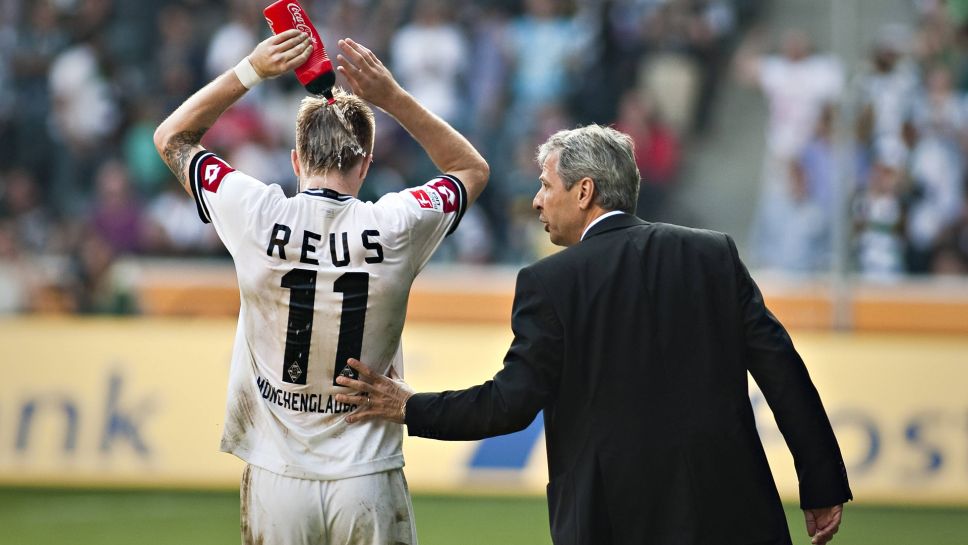
Favre has carried each of Hertha Berlin, Gladbach and Nice to European finishes over the last decade – teams not necessarily expected to scale such heights – and BVB will be hopeful he has some Yellow and Black magic dust to sprinkle on Die Schwarzgelben.
How will Favre, a renowned tactical perfectionist, go about setting up his Dortmund side? bundesliga.com takes a closer look…
A Nice style of play
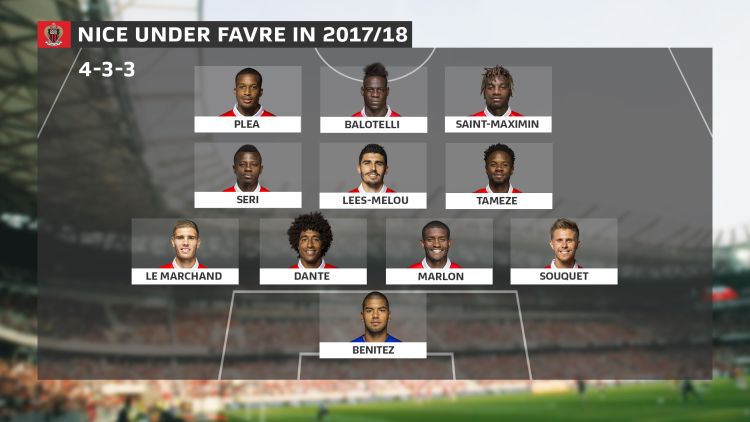
An obvious place to start is with Favre’s recent Nice teams. Favre has spent the last two seasons in France since leaving the Foals in 2016, and after leading Les Aiglons to third behind Monaco and Paris-Saint-Germain last term, fell just short of taking Nice into the UEFA Europa League at the end of 2017/18.
Those two campaigns each had two distinctly successful spells: In 2016/17 Nice were top of the table between Weeks 6 and 19 before settling into third; this season – following the losses of star performers Wylan Cyprien (to injury), and Younes Belhanda (to Galatasaray) – Nice struggled to find their rhythm until the new year, but have since climbed from 18th to sixth.
The biggest common denominator, a free-scoring Mario Balotelli aside? A 4-3-3 formation. When Favre has experimented with three at the back or a packed midfield, the goals – and points – simply haven’t rolled in quite the same way.
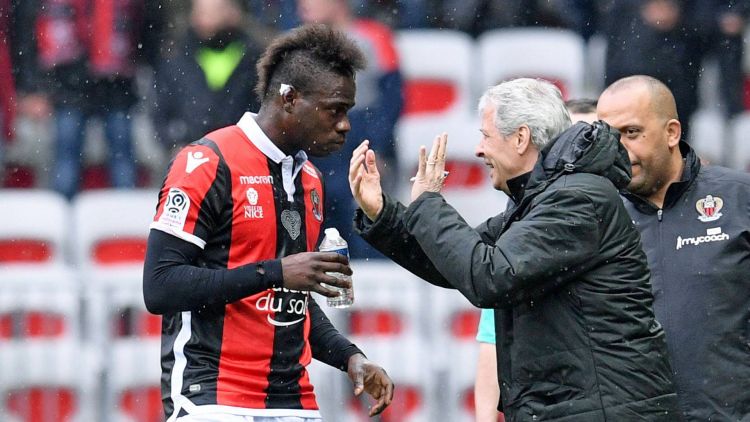
Within that 4-3-3 Favre shows certain predilections, too. Balotelli leads the line, with right-footers either side of him. That means Allan Saint-Maximin, on the right, can focus on providing the assists, of which he has a team-high nine in all competitions, with Alassane Plea allowed to cut inside from the left to plunder goals. His haul of 21 – just five shy of Balotelli – suggests the system works.
Further back, Nice signed Adrien Tameze last summer expecting Jean Seri to leave. When the latter stayed, Favre put them both in his midfield. The pair can each anchor the team or get involved in attacks, but it is left predominantly to Pierre Lees-Melou to break into the opposition box with late runs which are strikingly similar to Leon Goretzka’s for Schalke.
Dortmund a la Nice?
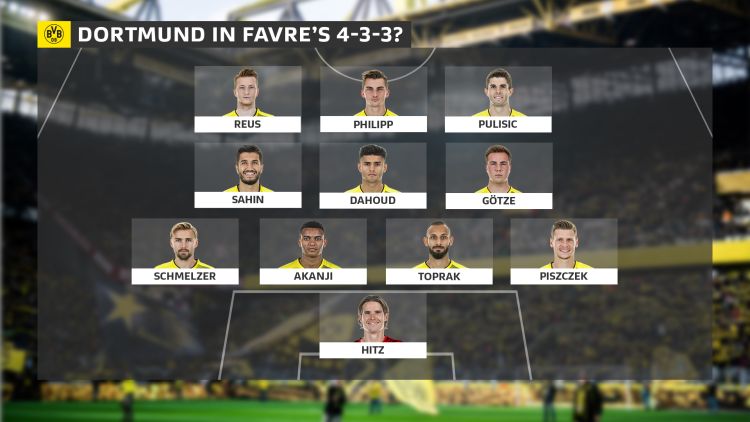
So what might that mean for Dortmund? The sale of Pierre-Emerick Aubameyang to Arsenal and subsequent ankle injury sustained by his successor Michy Batshuayi have shorn BVB of a natural No.9, but one thing they do have before the summer transfer window blows open is an abundance of final third operators – some of them the best in the world in their positions.
Favre could even pair up his right-footers one week, left-footers the next. Usain Bolt, or perhaps indeed his mother, could lead the line with Reus and Christian Pulisic either side: Pulisic, Dortmund’s top assister with six this season, on the right; Reus, who has plundered seven Bundesliga goals from 11 games since his return from injury, on the left. Tired legs on their part could see Maximilian Philipp and Andriy Yarmolenko playing in tandem instead. Philipp would fancy his chances of building on a team-high nine goals this term if allowed to cut inside from the flank, adrift of opposition defenders, the way Plea currently does from the opposite flank.
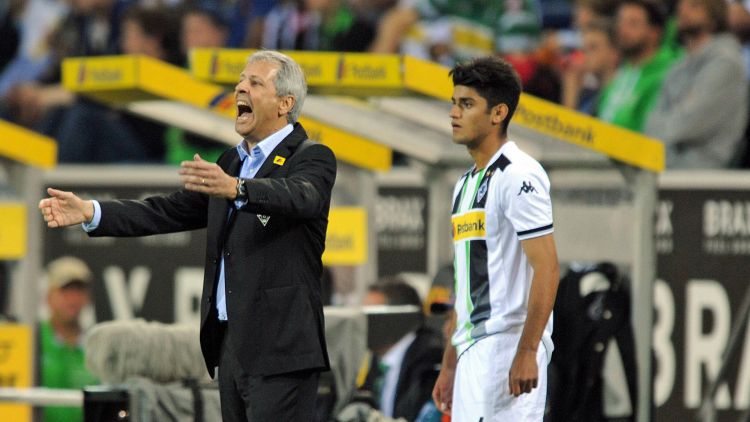
In Nuri Sahin, meanwhile, BVB have a player who, like Seri, is as happy shielding the defence as he is pushing forward. With Julian Weigl, Mario Götze and Shinji Kagawa also on the books, Dortmund are spoilt for midfield options, but the experience of Lees-Melou at Nice means that Mahmoud Dahoud might be the happiest man in North Rhine-Westphalia right now.
Favre was a fan of a then-teenaged Dahoud when the midfielder was in the Gladbach youth academy, and now, fully matured, he stands as the player most like his Nice counterpart. Dahoud has been shuffled around a three- and four-man midfield this season and still managed five assists. What might he do when given pride of place at the Signal Iduna Park?
Borussia Mönchen-throwback
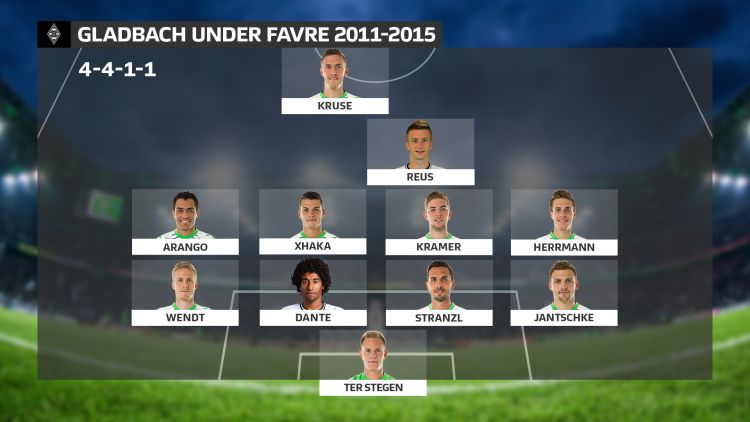
Two seasons at Nice may not shed quite so much light on what Favre’s Dortmund could look like as well as his four campaigns at Gladbach, though, especially given the fact that they play in the same league and 4-2-3-1 was the formation du jour in Germany then, and remains largely so now, despite Julian Nagelsmann’s best attempts to reinvent the wheel at Hoffenheim.
Favre’s Gladbach were their own outliers between 2011 and 2015, playing a 4-4-1-1. It worked, though. With a limited budget the Foals finished fourth, eighth, sixth and third in Favre’s four seasons at the club. In the early part of Favre’s reign, Reus – a player he’ll happily inherit at BVB – played off Mike Hanke. After Reus swapped Borussias, Raffael was the player typically tasked with playing behind Max Kruse.
This meant Gladbach could quickly pack the midfield if they lost the ball, but when they had possession, Reus – and then Raffael – were nigh on impossible to mark. In the case of the former, his most prolific season to date came in 2011/12, when he scored 21 goals in all competitions. Often used wide or deep since he returned to Dortmund, Reus’ joy might even outstrip Dahoud’s on being restored as a de facto centre-forward.
Reus is not the only world star who began to play his best football under Favre either: Marc-Andre ter Stegen went from academy graduate to the apple of Barcelona’s eye under the auspices of the Swiss tactician; Granit Xhaka earned a move to the English Premier League with Arsenal, and even Juan Arango – already a national treasure for Venezuela with European top-flight experience – says himself that he played his best football under Favre.
The perfect storm
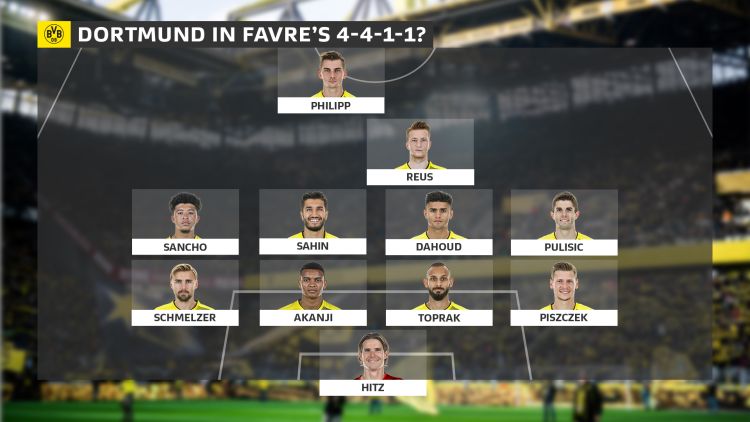
So what will this mean for Dortmund next season? A flat-back four is a given, although the presence of Dante in both his Nice and Gladbach sides shows that Favre likes balance at the back; two left-footers, two right. Might Manuel Akanji be the one to benefit? A Swiss compatriot of Favre’s, the former Basel enforcer has been playing left-back in recent weeks, so playing inside shouldn’t be too much of a leap.
Further forward, it’s win-win: either play a front three, let Pulisic get around the full-back and create chances for Reus, plus Philipp – or whomever else occupies the centre-forward position – and watch opposition nets bulge, or rekindle the Gladbach years, and truly unlock the player Reus has always threatened to become.
- 消息参考来源: BUNDESLIGA
- 严禁商业机构或公司转载,违者必究;球迷转载请注明来源“懂球帝”
- 懂球帝社区规范:抵制辱骂

